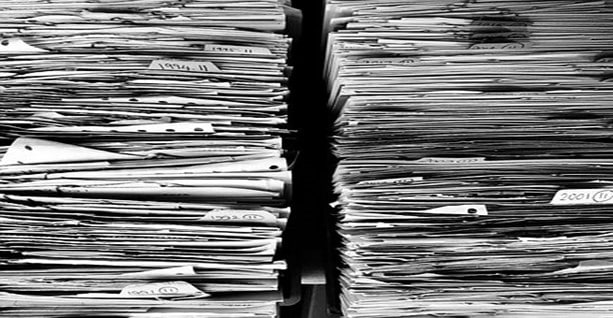
Four Ways to Recover an Unsaved Word File
FOUR WAYS TO RECOVER AN UNSAVED WORD FILE
One of the worst things that could ever happen to a writer is losing their work. The moments of sheer horror that follow the loss of an unsaved word file are unfathomable.
Think about it.
Imagine working hard on a nonfiction book project. Then, suddenly, the computer screen goes blank. All that hard work vaporized in a few seconds.
Sadly, this situation is far more common than most people think. Unexpected computer crashes, pesky viruses, or just gremlins in the system can cause writers to lose progress on nonfiction books, setting their writing schedule into disarray.
But there are possible solutions to a lost Word file. This article will discuss four ways authors can recover a lost Word file, saving their precious ideas and book writing schedule.
Let’s get on with it!
Is it Possible to Recover an Unsaved Word File?
Yes, it is possible to recover an unsaved Word file. Microsoft Word has an AutoRecover feature that saves a copy of any file every few minutes in case of a power outage, computer crash, or other unexpected issues that may cause writers to lose their progress on a nonfiction book.

Additionally, there are third-party tools that can help recover unsaved Word files.
These tools go through temporary or backup system files to find whatever may be left. However, the chances of successful recovery decrease the longer writers wait to attempt to recover the file.
So, it is important to act quickly upon realizing the Word file was not saved.
Above all, do not restart the computer. Restarting the computer clears its memory cache, potentially dumping temporary and AutoRecover files.
How to Recover Unsaved Word Files
The following ways can help writers save a nonfiction book by recovering an unsaved Word file:
AutoRecover
The program may automatically recover the document when first opening Word after a crash or unexpected shutdown. Look for a prompt asking to open the recovered file. If so, there is not much more to be done. However, not all of the document’s contents may have been recovered. At least, it is possible to recover most of it.
If the prompt does not automatically appear, do the following:
- Go to File > Info > Manage Document > Recover Unsaved Documents (in Word 2010)
- Go to File > Options > Save > Autorecover File Location (in Word 2013 and later)
Please bear in mind that the AutoRecover function must be on in Microsoft Word to ensure that files are temporarily saved. Here is how to do it:
- Open Microsoft Word.
- Click on “File” in the top left corner of the screen.
- Click on “Options” at the bottom of the left-hand menu.
- Click on “Save” in the left-hand menu.
- Under “Save documents,” check the box next to “Save AutoRecover information every [x] minutes” (where [x] is the number of minutes you want Word to wait between AutoRecover saves).
- Choose the location to save the AutoRecover files by clicking on the “Browse” button next to “AutoRecover file location.”
- Click “OK” to save changes.
That’s all there is to it. It pays to take five minutes to double-check to ensure the AutoRecover feature is on. This action has saved countless nonfiction books from disaster.
Temporary Files
Word backs up everything using temporary files. These files allow the system to keep track of everything while allowing users to recover files if needed.
To check temporary files for an unsaved version, do the following:
- Go to File > Info > Manage Document > Recover Unsaved Documents (in Word 2010)
- Go to File > Options > Save > Autorecover File Location (in Word 2013 and later)
Temporary files do not need to be turned on. This function is automatic in Word. However, it is not foolproof. So, acting quickly can help save progress before Windows automatically cleans up temporary files.
Backup Files
Microsoft Word backup files are copies of original Word documents created automatically by Word to safeguard against data loss. They are usually saved in the same directory or folder as the original document and have a file extension of “.wbk” (for Word 2007 and earlier) or “.asd” (for Word 2010 and later).
Word saves a backup file every time you save your document by default. However, the backup file might not exist if the file was never saved. In such cases, checking temporary or AutoRecover files may be the only solution.
Third-Party Recovery Tools
Third-party recovery tools might be able to save the day. These tools scrub backup, temporary, and AutoRecover files, saving authors time and effort to locate previous versions of lost work.
Tools such as EaseUS Data Recovery Wizard, Recoverit, and iBeesoft can help stave off disaster. However, please bear in mind these tools are not foolproof. So, there may still be a possibility the apps are unable to recover the unsaved file(s).
A good rule of thumb is to have these apps already installed. That way, authors can act promptly to recover an unsaved file.
If an author waits until a computer crash or unexpected app shutdown occurs to install the recovery tool, it may be too late to recover a backup, temporary, or AutoRecover file.

One Final Thought
While recovering unsaved files is possible most of the time, there are circumstances in which recovering an unsaved file may not be possible:
- If the file was never saved in the first place.
- The AutoRecover function was off.
- The temporary files were deleted.
- A file was overwritten.
- If the file was corrupted.
In particular, file corruption can occur due to a virus or cybersecurity issues. Taking proactive steps to protect against data loss can save progress for nonfiction books, corporate histories, or company history books.
Best of all, these recovery methods do not cost a penny. Most third-party apps have a free trial version or are free to use. It is worth taking the time to review system settings to ensure measures are in place to recover unsaved files in case disaster strikes.
Related Content
- 0 Comment
Subscribe to Newsletter
- How Can SharePoint Be Used To Organize and Disseminate SOPs?
- Planning the Perfect Genealogy Research Trip: A Step-by-Step Guide
- From Silly to Awesome: How Words Change Meaning Over Time
- The Psychology of Font Choice: How Typography Impacts Content Engagement
- How to Distribute SOPs for Maximum Usability

